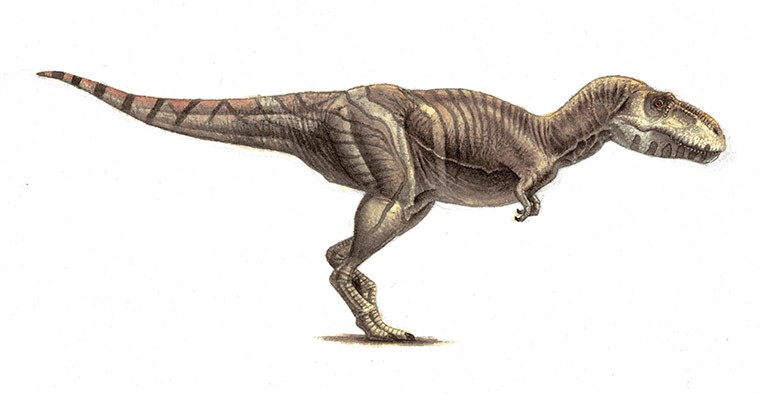Post by dinosauria101 on Mar 31, 2019 9:37:57 GMT 5
Gomphotherium steinheimense
Gomphotherium ("welded beast") is an extinct genus of proboscids from the Neogene and early Pleistocene of Eurasia, Africa, and North America. G. productum is known from a 35-year-old male 2.51 m (8 ft 3 in) tall weighing 4.6 t (4.5 long tons; 5.1 short tons). Even larger is G. steinheimense, known from a complete 37-year-old male found in Mühldorf, Germany, which is 3.17 m (10.4 ft) tall and weighed 6.7 t (6.6 long tons; 7.4 short tons). It had four tusks, two on the upper jaw and two on the elongated lower jaw. The lower tusks are parallel and shaped like a shovel and were probably used for digging up food from mud. Unlike modern elephants, the upper tusks were covered by a layer of enamel. Compared to elephants, the skull was more elongated and low, indicating that the animal had a short trunk, rather like a tapir's.[citation needed] These animals probably lived in swamps or near lakes, using their tusks to dig or scrape up aquatic vegetation. In comparison to earlier proboscids, Gomphotherium had far fewer molars; the remaining ones had high ridges to expand their grinding surfaces. Gomphotherium inhabited dry wooded regions near lakes.

Tarbosaurus bataar
Tarbosaurus belongs in the subfamily Tyrannosaurinae within the family Tyrannosauridae, along with the earlier Daspletosaurus, the more recent Tyrannosaurus and possibly Alioramus. Animals in this subfamily are more closely related to Tyrannosaurus than to Albertosaurus and are known for their robust build with proportionally larger skulls and longer femurs than in the other subfamily, the Albertosaurinae. Although many specimens of this genus have been found, little definite data was confirmed on the dinosaur as of 1986, though it was presumed to share many characteristics with other tyrannosaurids. The close similarities have prompted some scientists to suggest a possible link between the North American and Eurasian continents at that time, perhaps in the form of a land bridge.As with most dinosaurs, Tarbosaurus size estimates have varied through recent years. It could have been 10 to 12 meters long, with a weight of 5 - 7 tons.

Credit to Wikipedia
Gomphotherium ("welded beast") is an extinct genus of proboscids from the Neogene and early Pleistocene of Eurasia, Africa, and North America. G. productum is known from a 35-year-old male 2.51 m (8 ft 3 in) tall weighing 4.6 t (4.5 long tons; 5.1 short tons). Even larger is G. steinheimense, known from a complete 37-year-old male found in Mühldorf, Germany, which is 3.17 m (10.4 ft) tall and weighed 6.7 t (6.6 long tons; 7.4 short tons). It had four tusks, two on the upper jaw and two on the elongated lower jaw. The lower tusks are parallel and shaped like a shovel and were probably used for digging up food from mud. Unlike modern elephants, the upper tusks were covered by a layer of enamel. Compared to elephants, the skull was more elongated and low, indicating that the animal had a short trunk, rather like a tapir's.[citation needed] These animals probably lived in swamps or near lakes, using their tusks to dig or scrape up aquatic vegetation. In comparison to earlier proboscids, Gomphotherium had far fewer molars; the remaining ones had high ridges to expand their grinding surfaces. Gomphotherium inhabited dry wooded regions near lakes.

Tarbosaurus bataar
Tarbosaurus belongs in the subfamily Tyrannosaurinae within the family Tyrannosauridae, along with the earlier Daspletosaurus, the more recent Tyrannosaurus and possibly Alioramus. Animals in this subfamily are more closely related to Tyrannosaurus than to Albertosaurus and are known for their robust build with proportionally larger skulls and longer femurs than in the other subfamily, the Albertosaurinae. Although many specimens of this genus have been found, little definite data was confirmed on the dinosaur as of 1986, though it was presumed to share many characteristics with other tyrannosaurids. The close similarities have prompted some scientists to suggest a possible link between the North American and Eurasian continents at that time, perhaps in the form of a land bridge.As with most dinosaurs, Tarbosaurus size estimates have varied through recent years. It could have been 10 to 12 meters long, with a weight of 5 - 7 tons.

Credit to Wikipedia


